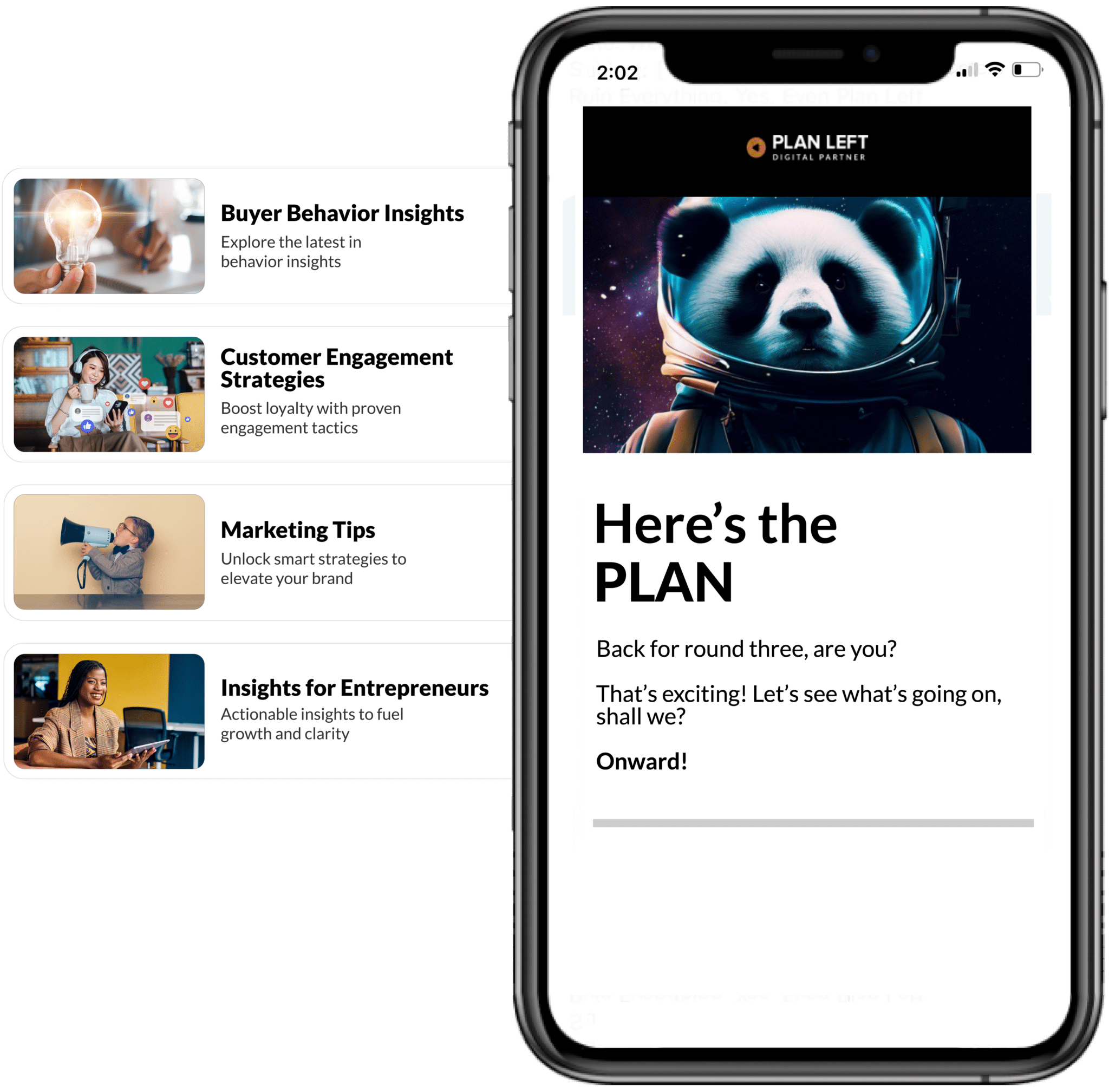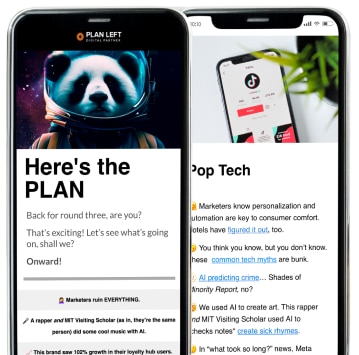
How to Know Exactly Which Marketing Activities Drive Results
You’re investing in marketing. Social media posts go out regularly. Email campaigns reach your list. Maybe you’re running ads or attending networking events. You’re doing the things businesses are supposed to do. But here’s the uncomfortable question: do you actually know which of these activities generates customers?
Most business owners operate in a frustrating fog when it comes to marketing effectiveness. They can tell you what they’re doing, but they can’t confidently tell you what’s working.
The Problem: Data Exists But Nobody Can Use It
Your marketing activities generate mountains of data. Website analytics track visitor behavior. Email platforms report open and click rates. Social media provides engagement metrics. Ad platforms track impressions and conversions.
The problem isn’t lack of information—it’s that this data lives in disconnected tools, uses technical language, and requires specialized knowledge to interpret.
Google Analytics might tell you about bounce rates and session duration. Your email platform reports deliverability and engagement. But what does any of this actually mean for your business?
Most analytics tools are built for marketing professionals who understand the technical terminology and know which metrics predict business outcomes. For everyone else, they’re overwhelming and often misleading.
Vanity Metrics vs. Metrics That Matter
Vanity metrics make you feel good but don’t predict business performance. Social media followers, website traffic, and email list size all seem important—and they can be—but none directly tells you whether marketing is generating revenue. A thousand website visitors who never become customers is less valuable than 50 visitors who convert to high-value clients.
The metrics that matter are those that connect directly to revenue and profitability. How much does it cost to acquire a customer? How much revenue does each customer generate over their lifetime? What percentage of leads become paying clients? Which marketing channels deliver qualified leads at sustainable costs? These questions cut through the noise and reveal marketing effectiveness.
The Essential Marketing Metrics Every Business Should Track
Customer Acquisition Cost (CAC)
Customer Acquisition Cost tells you exactly how much you’re spending to acquire each new customer across all marketing activities. This metric provides the baseline for evaluating marketing ROI. If you’re spending $1,000 to acquire customers who generate $500 in lifetime value, your marketing math doesn’t work—regardless of how good any individual tactic might feel.
To calculate CAC, divide your total marketing and sales expenses by the number of new customers acquired in that period. This includes ad spend, marketing tools, content creation costs, and team time dedicated to marketing activities.
Customer Lifetime Value (CLV)
Customer Lifetime Value projects the total revenue a customer will generate throughout their relationship with your business. This metric is critical because it determines how much you can afford to spend on acquisition.
A business where average customers generate $10,000 in lifetime value can justify much higher acquisition costs than one where customers generate $500.
CLV should inform every marketing decision. It tells you which customer segments are most valuable, which acquisition channels are worth scaling, and where you might be under-investing because you’re focused on initial purchase price rather than lifetime value.
Lead-to-Customer Conversion Rate
Your lead-to-customer conversion rate reveals how effectively you’re moving prospects through your sales process. If you’re generating leads but conversion rates are low, your problem isn’t marketing volume—it’s either lead quality or sales process effectiveness. This distinction is crucial because the solutions are entirely different.
Tracking conversion rates by traffic source also reveals which marketing channels deliver the highest-quality leads, not just the most leads.
Channel-Specific ROI
Not all marketing channels deliver equal results. Content marketing might generate highly qualified leads but require significant time investment. Paid ads might deliver volume quickly but at higher costs. Referrals might convert at exceptional rates but be difficult to scale. Understanding the ROI of each channel allows you to make strategic decisions about where to invest time, energy, and budget.
Identifying Your Best-Performing Channels
With clear visibility into channel-specific performance, you can objectively identify where your marketing investment generates the best returns. This might surprise you. The channel you enjoy most or that feels most active isn’t necessarily the one driving business results. Data removes the guesswork and reveals which activities deserve your focus.
Marketing optimization isn’t about doing more of everything—it’s about doing more of what works and stopping what doesn’t. When you can see performance clearly, these decisions become obvious. A channel that’s consistently generating customers at profitable costs deserves increased investment. Activities that consume resources without delivering measurable results should be reduced or eliminated, even if they’re trendy or competitors are doing them.
Building Your Marketing Measurement System
Step 1: Define Your North Star Metric
Every business needs one primary metric that indicates overall health and progress. For some businesses, it’s monthly recurring revenue. For others, it’s the number of qualified leads or new customer acquisition rate. Your North Star Metric should connect directly to business growth and be influenced by marketing activities you can control.
Step 2: Set Up Tracking That Actually Works
Effective tracking doesn’t require complex technical implementation. Start with the fundamentals: know where leads come from, track them through your sales process, and record whether they become customers. This basic tracking, done consistently, provides the foundation for data-driven decisions.
As your system matures, you can add sophistication—tracking specific campaign performance, testing different messaging, and analyzing customer behavior patterns. But don’t wait for the perfect system. Basic tracking implemented today beats sophisticated plans that never get executed.
Step 3: Create Weekly Review Rituals
Marketing data only drives better decisions if you actually review it regularly. Establish a weekly rhythm for examining your dashboard, identifying trends, and making small adjustments based on what you’re learning. These consistent reviews compound over time, creating continuous improvement that dramatically outperforms occasional major strategy overhauls.
Real Results: How Data-Driven Marketing Changes Outcomes
When businesses shift from gut-feel marketing to data-driven decisions, results change quickly. One business using this approach increased qualified leads by 20% in 90 days simply by reallocating budget from underperforming channels to ones that were delivering better results. They weren’t doing more marketing—they were doing smarter marketing based on what the data revealed.
Another shifted their entire content strategy after discovering that long-form educational content generated leads that converted at three times the rate of promotional content. This insight, visible only through clear metrics, transformed their content approach and significantly improved marketing ROI.
Confidence Through Clarity
The difference between guessing and knowing which marketing activities drive results isn’t technical sophistication—it’s having the right data presented in a way you can actually use. When marketing performance is clear, decisions become obvious. You stop wondering whether your investment is worthwhile and start optimizing the system that predictably generates growth.
Marketing doesn’t have to be mysterious or dependent on specialized expertise. With the right measurement system and intuitive dashboards that translate data into plain language, you can confidently manage your marketing, make informed decisions about where to invest, and build the kind of predictable growth that comes from actually knowing what works.
Explore Latest Posts
How to Know Exactly Which Marketing Activities Drive Results You're investing in marketing. Social media posts go out regularly. Email ... read more
December 18, 2025
The Entrepreneur's Guide to Creating a High-Ticket Flagship Offer Most businesses are built on a foundation of scattered services, multiple ... read more
December 16, 2025
Breaking Free from Marketing Silos: Why Community Matters for Business Growth Every entrepreneur knows the weight of making decisions alone. ... read more
December 11, 2025
Essential Strategies for Entrepreneurs
Get Actionable Business Insights & Marketing Tips
Our newsletter delivers real-world strategies from entrepreneurs who’ve been exactly where you are.
Sign up now for:
- Actionable growth strategies that work
- Insider tactics for attracting top talent
- Real-world case studies from successful founders
- Emerging tech trends that drive innovation
- Pragmatic marketing approaches for visionary leaders



